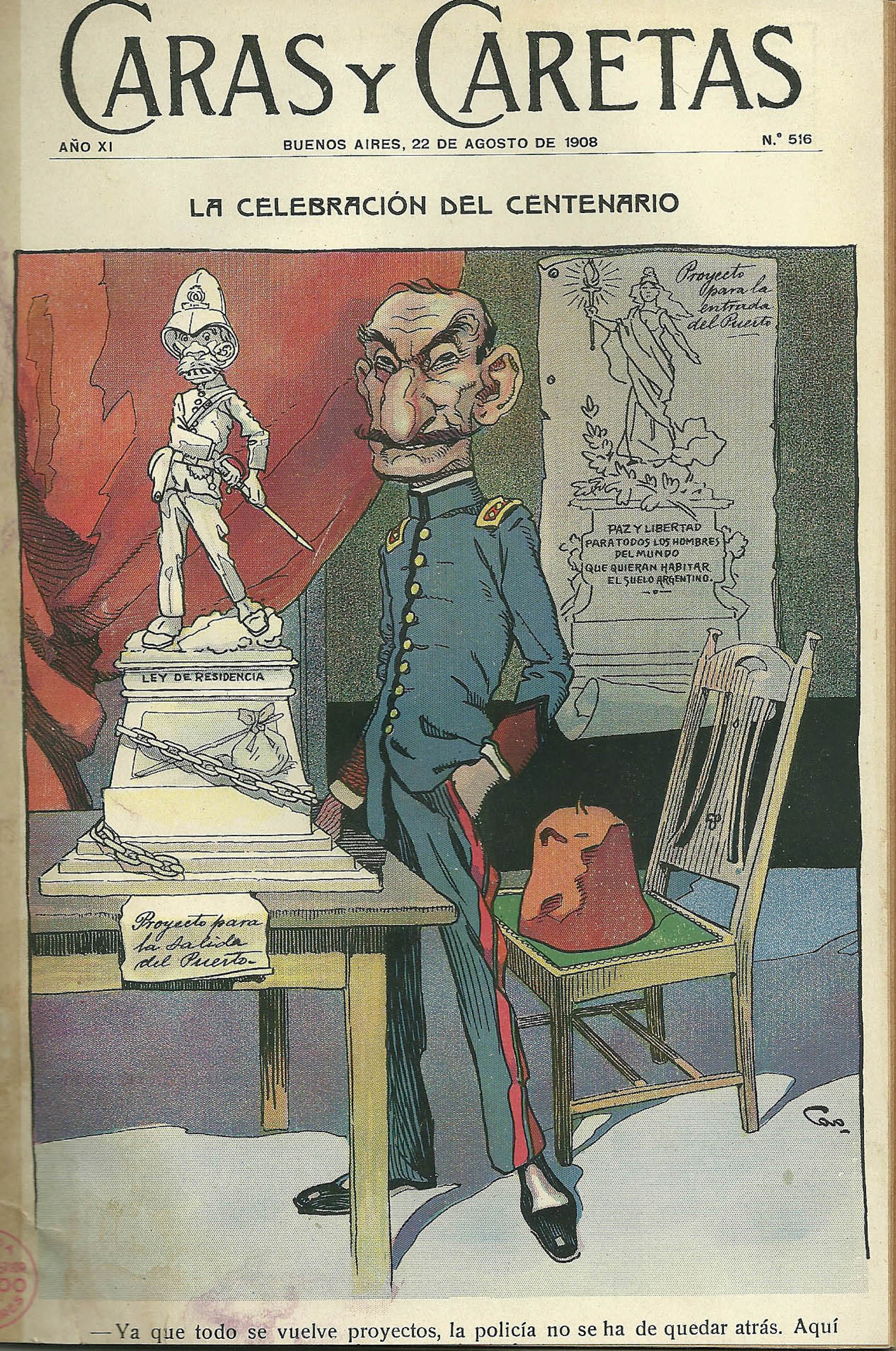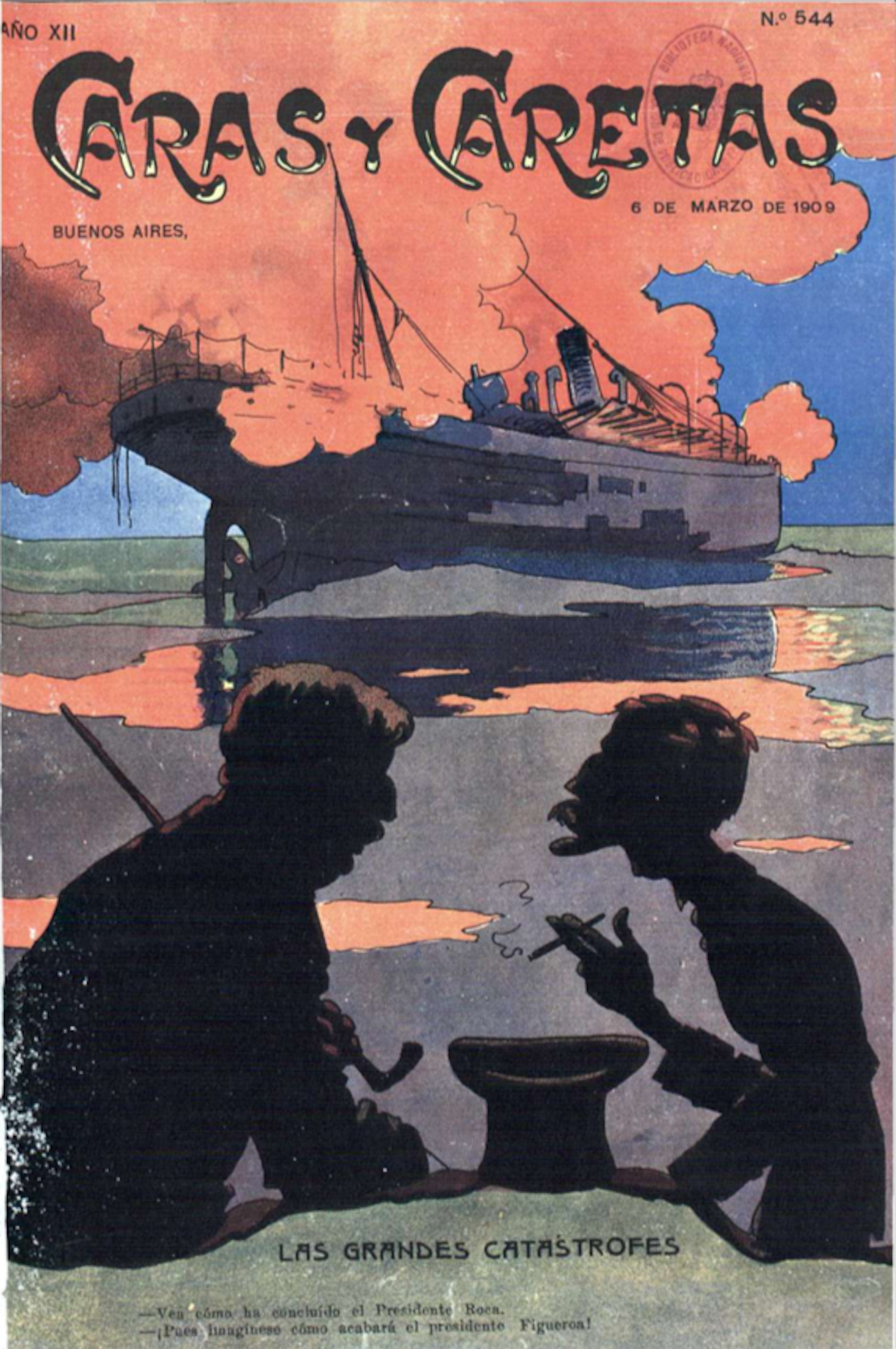Archive
Caras y Caretas
- Magazine
- Caras y Caretas
Word Count: 3
- Faces and Masks
- 08-10-1898
- 17-10-1939
Printed magazine
Calle Bolivar 578 to 586, Buenos Aires (editorial office).
- Spanish
25 cm
- Buenos Aires (AR)
Caras y Caretas was one of the widest read magazines in Buenos Aires. A collective venture, run largely by exiles, it renewed the public press through an attractive layout.
Word Count: 29

José María Cao (signed), Caras y Caretas, no. 516, 22 August 1908 (via Wikimedia Commons). 
"Viajero alemán en traje de gaucho recorriendo el territorio." Caras y Caretas, no. 164, 23 November 1901. 
"Las grandes catástrofes." Cover of Caras y Caretas, no. 544, 6 March 1909. 
Francisco Fortuny and Ramón de Castro Rivera, "Una escena de la Revolución de Mayo." Caras y Caretas, no. 34, 25 May 1899. Bockelman, Brian. “Bohemians, Anarchists, and Arrabales: How Spanish Graphic Artists Reinvented the Visual Landscape of Buenos Aires, 1880–1920.” Arrival Cities. Migrating Artists and New Metropolitan Topographies in the 20th Century, edited by Burcu Dogramaci et al., Leuven University Press, 2020, pp. 353–370. JSTOR, www.jstor.org/stable/j.ctv16qk3nf.21. Accessed 23 April 2021.
Szir, Sandra M. “Entre el arte y la cultura masiva. Las ilustraciones de la ficción literaria en Caras y Caretas (1898–1908).” Impresiones porteñas: imagen y palabra en la historia cultural de Buenos Aires, edited by Laura Malosetti Costa and Marcela Gené, Edhasa, 2009, pp. 109–140.
Szir, Sandra M. “Representaciones del arte y otras formas culturales en la intermedialidad de Caras y Caretas.” I Jornadas Internacionales de Estudios sobre Revistas Culturales Latinoamericanas. Ficciones metropolitanas: revistas y redes internacionales en la modernidad artística latinoamericana, Espigas, 2017, www.revistasdeartelatinoamericano.org/items/show/65. Accessed 14 April 2021.
Word Count: 140
Anonymous. “Nahuel Huapi. Comarca en que se hallan los caminos recién abiertos por Chile.” Caras y Caretas, no. 164, 23 November 190, n.p. [pp. 39–40]. Biblioteca Nacional de España, Hemeroteca Digital, http://hemerotecadigital.bne.es/issue.vm?id=0004125821&search=&lang=es. Accessed 21 April 2021.
Word Count: 45
- Buenos Aires
- Laura Karp Lugo. "Caras y Caretas." METROMOD Archive, 2021, https://archive.metromod.net/viewer.p/69/2950/object/5140-9031959, last modified: 12-05-2021.
-
José Maria CaoCartoonistIllustratorGraphic ArtistBuenos Aires
“Master of the pencil and the pen”, Galician artist José María Cao became one of the most relevant illustrators of Buenos Aires press by the beginning of the twentieth century.
Word Count: 31
Francisco Fortuny MasaguéPainterIllustratorGraphic ArtistBuenos AiresSpanish-born Francisco Fortuny migrated to Buenos Aires in 1887. His most renowned work was done as illustrator in printed magazines such as Caras y Caretas.
Word Count: 24